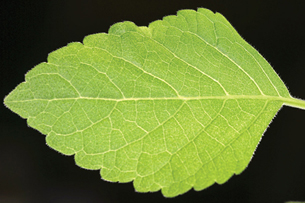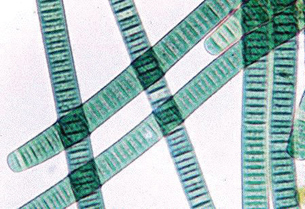Module 1 Intro
1. Module 1 Intro
1.4. Page 2
Module 1—Energy Flow and the Cycling of Matter
 Explore
Explore
 Read
Read
Begin this lesson by reading from pages 8 and 9 in your textbook. Don’t read “Investigation 1A,” but read the remainder of page 11 and to the bottom of the first column on page 12. Pay special attention to “Figure 1.2” on page 9, which shows the relationship between photosynthesis and cellular respiration. Also note “Figure 1.4” on page 11, which shows the distribution of solar energy in the biosphere.
 Self-Check
Self-Check
SC 1. Answer questions 3 and 4 on page 9 of the textbook.
SC 2. What conclusion can you make about the energy transfer from the solar system to organisms on Earth?
 Self-Check Answers
Self-Check Answers
SC 1.
-
The energy in photosynthesis is solar energy converted to chemical energy. The energy in cellular respiration is from the stored chemical energy that originated from photosynthesis; chemical energy is converted to other kinds of energy like heat and motion (energy required for cellular processes to occur.) Celllular respiration energy will never be involved in photosynthesis.
-
Consumers require the products of producers (e.g., oxygen, carbohydrates) and contribute the chemical elements of carbon dioxide and water, which are required for photosynthesis by producers.
SC 2. The energy transfer from the solar system to organisms on Earth is not efficient because only 2% of this energy transfer actually makes it to living things (producers). However, the producers that capture this energy are capable of sustaining life on Earth with only 2% of this energy by producing from 150- to 200-billion tonnes of biomass.
Producers: Energy Harvesters
photosynthesis: the process by which plants, algae, and some kinds of bacteria use solar energy to chemically convert carbon (inorganic) into carbohydrates (organic) such as sugars and starches
chemosynthesis: the process by which certain fungi and bacteria use the energy from chemical nutrients to chemically convert carbon (inorganic) into carbohydrates (organic)
In this part of Lesson 1 you will examine the various mechanisms involved in collecting and storing energy. Biology is full of diversity, so it may not come as a surprise to you that there are two methods used by producers or autotrophs to store energy. These methods are photosynthesis and chemosynthesis. Photosynthesis is used by terrestrial producers with access to a light source. Chemosynthesis is used by deep-sea producers with no access to solar energy.
The flow of energy begins with producers. Terrestrial producers are capable of completing the conversion process (photosynthesis) by absorbing water from the ground and carbon dioxide from the air. Chloroplasts, containing the green pigment chlorophyll, that are inside the cells of a producer capture the solar energy generated by the Sun.

© Bertrand Collet/Shutterstock
Solar energy is converted to chemical energy. This is an important event, since your body requires chemical energy to keep functioning.
Photosynthetic Equation
6 CO2(g) + 6 H2O(l) + solar energy → C6H12O6(aq) + 6 O2(g)
This equation shows the first law of thermodynamics—energy has changed forms.
first law of thermodynamics: energy in a system cannot be created nor destroyed; it changes forms
photoautotrophs: the process by which plants, algae, and some kinds of bacteria use solar energy to chemically convert carbon (inorganic) into carbohydrates (organic) such as sugars and starches

© Turner Designs Inc.
Some photoautotrophs are not plants, but are special bacteria capable of performing photosynthesis. These bacteria are called cyanobacteria and are usually found in fresh water environments, but they can also be found in such areas as oceans; damp, rocky areas; and damp soil. Some even live in the fur of sloths!
Photosynthesis is an important mechanism for capturing and storing energy. It is not surprising, therefore, to find out that approximately 98% of all producers use photosynthesis to produce food! Those are the organisms capturing a fraction of the Sun’s energy. What about the other 2% of producers? What mechanism do they use? Why don’t they use photosynthesis?
The other 2% of producers don’t use photosynthesis for the simple reason that they do not have access to the 2% of solar energy available to photoautotrophs. These organisms can be found in extreme environments, such as the ocean floor. These environments usually share a common characteristic—they are in complete darkness! These organisms resort to a mechanism called chemosynthesis to convert inorganic molecules into an organic molecule that will serve as a food source.
It is time to more closely explore the processes of photosynthesis and chemosynthesis.